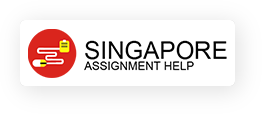| University | Singapore University of Social Science (SUSS) |
| Subject | ACC302: Advanced Financial Reporting |
Question 1
Discuss how the consolidated financial statements reflect:
(a) The “single economic entity” concept.
(b) The distinction between “control” and “ownership”.
Question 2
Each of the following independent statements may be true or false. Discuss the circumstances whereby the statement is true and the circumstances whereby it is false.
(a) Goodwill on consolidation in the Consolidated Statement of Financial Position is the difference between the consideration paid by the Parent and the Parent’s share of the fair value of identifiable net assets of a partially-owned Subsidiary.
(b) Dividends declared by a Group (which is shown as an appropriation in the Consolidated Statement of Changes in Equity) comprises dividends declared by the Parent and dividends declared by a Subsidiary to its Non-controlling Interests.
(c) A Group will always report a Consolidated Profit after Tax that is larger than the Consolidated Profit after Tax attributable to the Shareholders of the Parent.
Question 3
Assume that both the Parent and Subsidiary adopt 31 December as their financial year-end. Further, assume that the transactions were conducted on a cash basis.
For each of the following independent scenarios in each of the independent parts:
(i) Prepare all the relevant journal entries in the separate financial statements of the respective companies.
(ii) Prepare all the relevant consolidation journal entries for the preparation of the consolidated financial statements of the Parent.
(iii) Compare and contrast the accounting treatment/principles that you had applied in the independent scenarios in each part in preparing the journal entries and consolidation journal entries.
Hire a Professional Essay & Assignment Writer for completing your Academic Assessments
Native Singapore Writers Team
- 100% Plagiarism-Free Essay
- Highest Satisfaction Rate
- Free Revision
- On-Time Delivery
Part A
(a) On 20 December 20×1, a 90%-owned Subsidiary sold a piece of inventory that it bought for $200,000 to its Parent for $300,000. As of 31 December 20×1, that piece of inventory was still with the Parent and the net realizable value of the inventory was $250,000 on this date.
(b) On 20 December 20×1, a Parent paid a management fee of $200,000 to its 90%-owned Subsidiary. The Subsidiary recognized the fee as income whilst the Parent recognized the fee paid as an expense.
Part B
(a) On 20 December 20×1, a Parent paid interest of $200,000 to its 80%-owned Subsidiary. The Subsidiary recognized the interest as income whilst the Parent recognized the interest paid as an expense.
(b) On 20 December 20×1, a Parent paid interest of $200,000 to its 80%-owned Subsidiary. The Subsidiary recognized the interest as income whilst the Parent properly capitalized the interest paid as part of the cost of its construction work-in-progress in accordance with SFRS(I) 1- 23: Borrowing Costs.
Part C
(a) On 20 December 20×1, a 70%-owned Subsidiary sold a piece of inventory X which it bought for $200,000 to its Parent for $300,000. As of 31 December 20×1, that piece of inventory was still with the Parent and the net realizable value of the inventory was $250,000 on this date.
(b) On 20 December 20×1, a 70%-owned Subsidiary sold a piece of inventory Y which it bought for $300,000 to its Parent for $200,000. As of 31 December 20×1, that piece of inventory was still with the Parent and the net realizable value of the inventory was $250,000 on this date.
(c) On 20 December 20×1, a 70%-owned Subsidiary sold a piece of inventory Z which it bought for $300,000 to its Parent for $200,000. As of 31 December 20×1, that piece of inventory was still with the Parent and the net realizable value of the inventory was $190,000 on this date.
Part D
(a) On 20 December 20×1, a 60%-owned Subsidiary paid rental of $200,000 to its Parent. The Parent recognized the rental as income whilst the Subsidiary company recognized the rental paid as an expense. The space area rented by the Subsidiary from the Parent comprises 2% of the building for which the Parent rented out to other external parties. In the separate financial statements of the Parent, the carrying amount of the building was $5,000,000 as of 31 December 20×1.
(b) On 20 December 20×1, a 60%-owned Subsidiary paid rental of $200,000 to its Parent. The Parent recognized the rental as income whilst the Subsidiary recognized the rental paid as an expense. The space area rented by the Subsidiary from the Parent comprises v98% of the building for which the Parent occupies the remaining 2% thereof. In the separate financial statements of the Parent, the carrying amount of the building was $5,000,000 as of 31 December 20×1.
Question 4
Research “Announcements” made by companies listed on the Singapore Exchange (“SGX”) pertaining to “Asset Acquisitions and Disposals” in the recent five years. Select one or more companies that had completed one or more business combinations involving subsidiaries. Appraise their financial statements for one or more financial years subsequent to those business combinations.
For the company/is that you have selected, using extracts of “line items” from the face of the financial statements and “Notes to the Financial Statements” pertaining to consolidation of financial statements, outline the relevant accounting policies/treatment and include reference to the specific requirements of the SFRS(I).
Buy Custom Answer of This Assessment & Raise Your Grades
Are you seeking college assignment help on ACC302: Advanced Financial Reporting assignment then don't need to look further. At Singapore Assignment Help we have native experts who have long experience and good knowledge to provide the best quality solution on finance assignments at a very low price.
Looking for Plagiarism free Answers for your college/ university Assignments.
- NIE352 Interdisciplinary Problem-Solving for Impact Tutor-Marked Assignment 1 July 2025
- Research Proposal Assignment 3: Health Services Research Study Proposal
- CS5224 Cloud Computing Assignment Lab 2: Cloud Services
- SOC319 Sociology of Health and Healthcare End-of-Course Assessment – July Semester 2025
- BME356 Functional Genomics End-of-Course Assessment – July Semester 2025
- SBP310 Fundamentals of Sustainable Business Practices End-of-Course Assessment – July Semester 2025
- Elements of Economics Continuous Assessment 01 – Univarsity of Embu (UoEm)
- MECO6936 Social Media Communication Campaign Plan Essay Semester 2, 2025
- S2450C Health Promotion Coursework Assessment AY2025 – Republic Polytechnic
- PSB7010CL Strategic Project Management Individual Assignment Written Report

